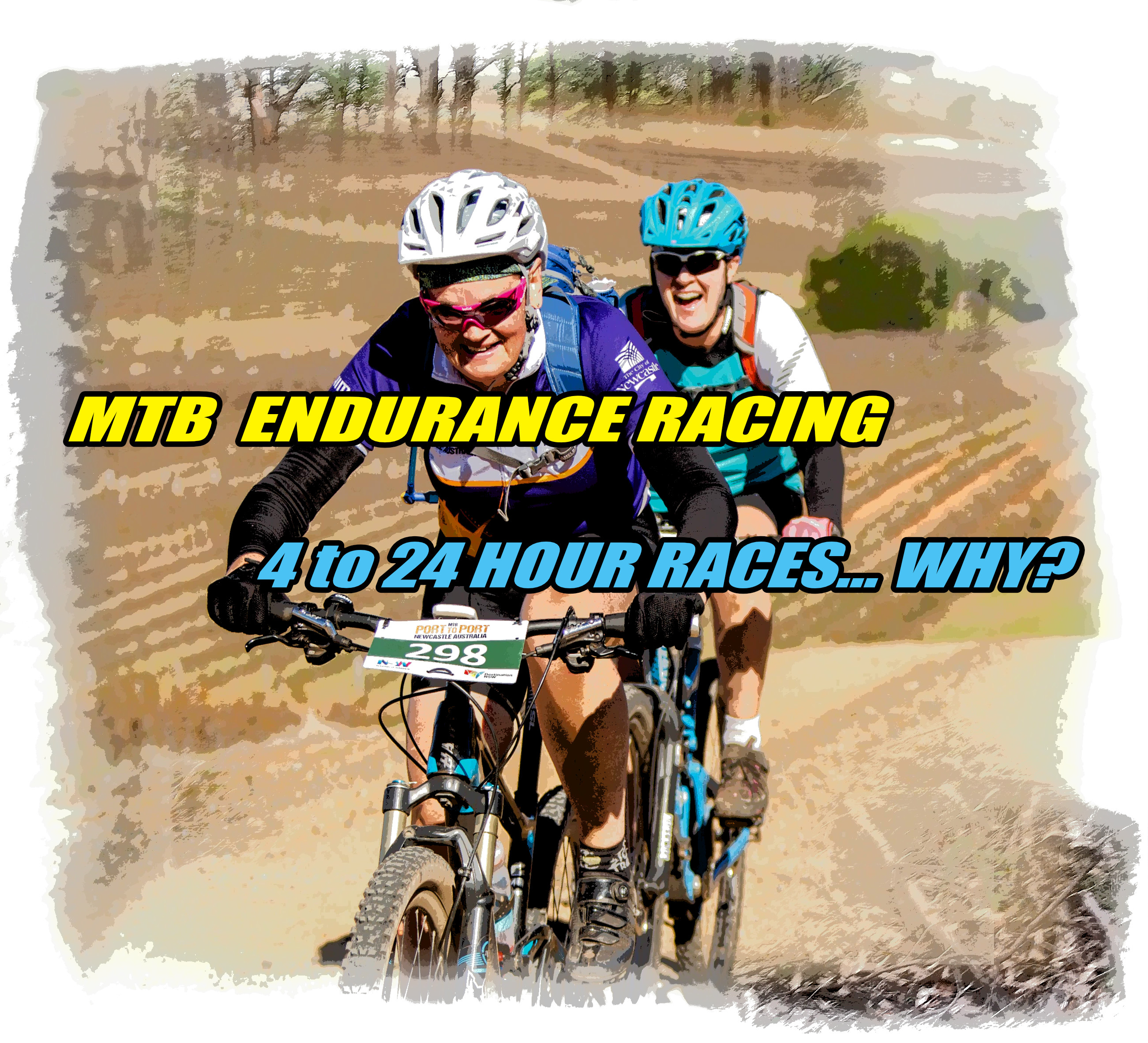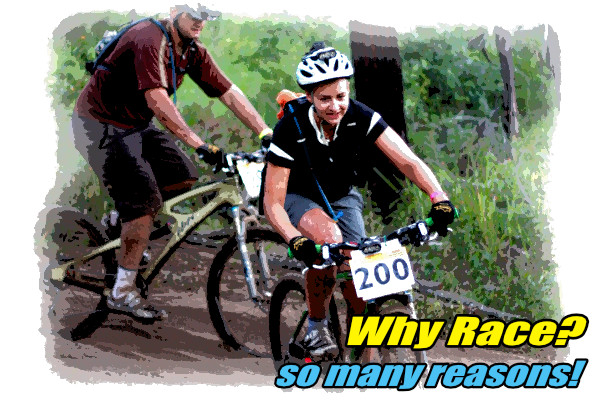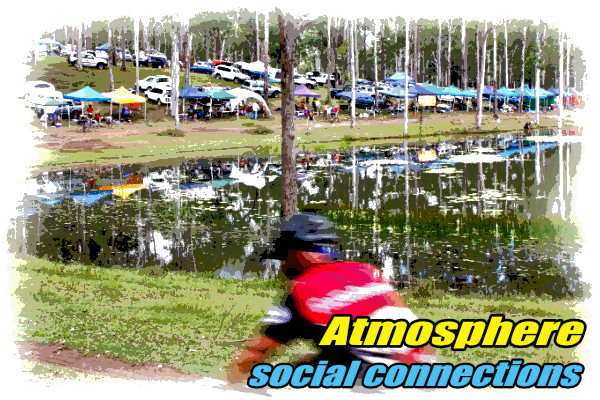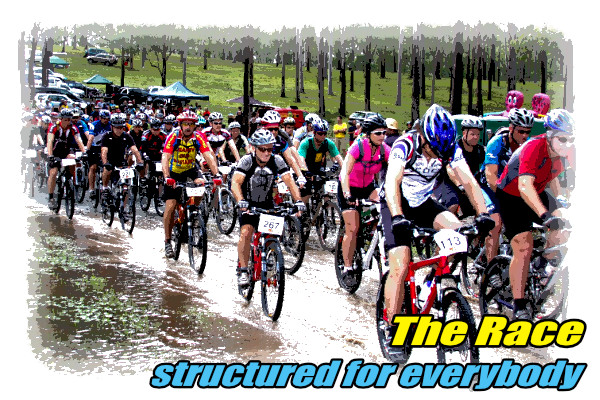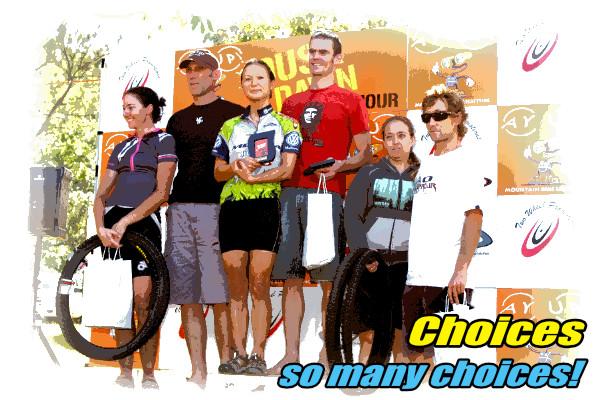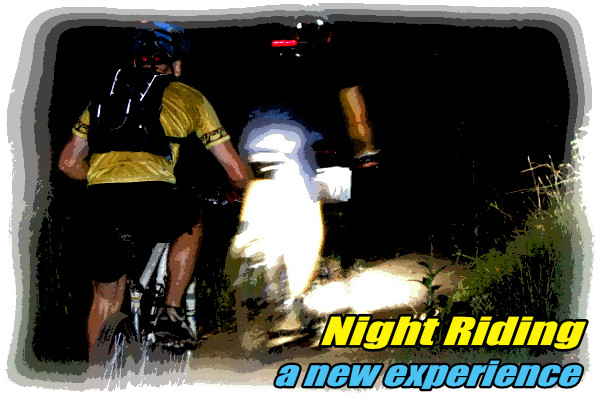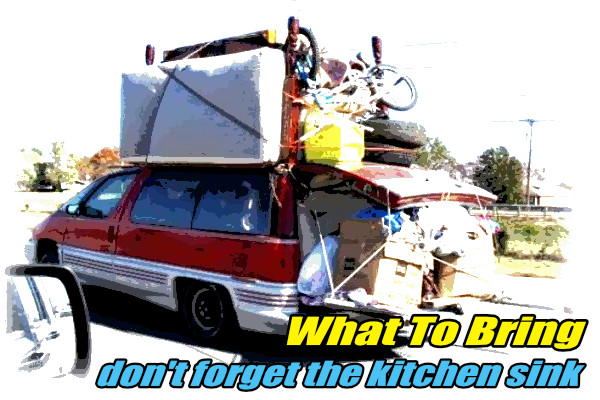MTB Endurance Races 4 To 24 hours
MTB Endurance races such as 4, 6, 8, 12 and 24 hours sounds like a daunting undertaking on an MTB, especially to someone new to the sport. However, the beauty of MTB endurance races is that they are open to riders with a wide range of skill, fitness and experience. You race as seriously or non-seriously as you like, and treat it as an opportunity to ride a different trail or simply enjoy the atmosphere of the event if you wish.
We’ve been asked to give newbies some advice on entering their first circuit based, endurance event. Please note that, although this article is biased to 4 to 24 circuit mtb endurance races, much of the content also applies to epic/marathon 1 day races such as 50 to 100 km, as well as multi-stage races that occur over a few days.
So here we go …
Why Do MTB Endurance Races At All?
Fun, motivation and goals, challenge and achievement, social connection, learning; there are many reasons to consider doing an mtb endurance race event.
Fun
For most riders who enter mtb endurance races, fun factors in somewhere. Only the most serious go into it with the sole intention of hurting. For most riders, they enter with ‘fun’ being high on their list of reasons. The fun comes from riding a trail they haven’t seen before, or never raced on. It comes from the company they keep or meet at the race. Fun comes from watching others enjoying themselves or the entertainment provided by the race organisers.
Motivation and goals
Nothing motivates you to be better than you are on the MTB than entering an mtb endurance race months ahead of race day. Regardless of whether you are just entering for fun or taking it seriously, you suddenly find new drive to get out and ride. You’ll push that bit harder into breathlessness or spend a few more minutes or kilometres riding to gain just a little more fitness and hone those skills. You’ll set goals for yourself along the way and come race day. You’ll enjoy working towards and ticking off those goals both in training and during the race itself.
Challenge and achievement
Aside from training for the race, you’ll find yourself challenging yourself during the race as well. Often these challenges differ person to person. Out on the track during many of your race laps, you’ll challenge yourself constantly. In doing so you’ll learn new things about your own capabilities both physically and mentally. Catch that rider in front, take that ‘A’ line this time, shave 10 seconds off the next lap. Sometimes it’s as simple as getting off your butt and back on the bike when your legs are tired. Whatever the case may be, you’ll challenge yourself and often you will achieve in doing so. You are gaining so much and winning within yourself without ever seeing the podium.
Social connection
Being around so many other people who are like minded and there for similar reasons to yourself breeds social connections. You’d be surprised what inspires people to say hello at such events. Your riding jersey might catch their eye. Maybe they like your bike because it’s new, or old school. They might interested in your choice of tyres. Mountain bikers love talking about their bikes and gear.
Out on track you’ll often find yourself near other riders who are cruising at a similar pace. Conversations strike up born from nothing more than proximity to one and other. “I hate this hill”… “Me too but I love hammering down the other side”… “Yeh, and that big berm at the bottom is waaaay cool. Where are you from?”… “Bikesville, NSW”… “Oh my parents live there! I love riding at…” and so it goes on. Another connection made. Most riders are approachable in mountain biking, from the best of the best, down to the greenest of mtb endurance race newbies.
Learning
If you’ve never raced an mtb endurance race before, you will learn stuff. If you’ve raced an mtb endurance race before, you will still learn stuff. Depending on the length of the race and how many laps you do, you’ll learn how to fuel your body to keep going. You’ll learn how to pace yourself to make the distance and to rest between efforts. You’ll learn how eat while riding and drink regularly. You’ll learn to use your trail scanning skills and to listen for approaching riders catching you up. You’ll learn to listen to your bike and body so you know what’s going on with both.
Back in base camp you’ll learn about new products from other riders or at the trade stalls if they are present. You’ll learn from watching other riders prepare to race, how they pack their kit or what they eat and drink. Everywhere you look, if you are prepared to learn, you’ll learn.
Back on track you’ll learn where the smoothest lines are in every corner and on every rise or fall of the trail. You’ll learn to adapt as those lines change during the race. You’ll learn to adapt also to the changing grip levels as hundreds of rider churn it to dust or even mud if there’s rain around. You’ll learn whether your bike lube is good enough or if you still like your tyres. You’ll learn a lot about your mental strength as you tell your legs to shut up and pedal.
And so it goes on. MTB endurances races are a huge opportunity to learn so much about yourself, your bike, your riding and about other riders.
The Race
The race track
As general rule, most tracks for mtb endurance racing will be around 10 to 20 kilometres per lap. Any shorter and the congestion can be a problem. Also, the poor solo riders go stir crazy and feel like they are riding in a goldfish bowl. The track will often have some climbing sections mixed in with a variety of flattish and downhill sections also.
Most mtb endurance race tracks tend to be suitable for riders with limited skills and experience with a few more technical trail features (TTF) thrown in to keep the intermediate and elite riders challenged and interested as well. Most technical trail features that may be too much for a newer rider, are classed as an ‘A’ line. Where there is an ‘A’ line, there will be a ‘B’ line as well. ‘B’ lines are an easier way around the TTF although ‘B’ lines often come with the penalty of adding more time to the rider’s lap.
Riders on track
Only 1 rider per team is allowed on the course at one time. How many laps a rider does each turn is you or your team’s choice. As solo rider, you might just ride until you need to rest. You might have a strategy you want to follow such as 2 laps then 15 mins rest etc. As a team you might send a fast rider out for 2 laps to start the race and gain a lead, then settle everyone down into single laps each. You’ll adjust the strategy as needed depending on the time of day or competition etc. The point is though, as long as there’s only 1 rider from your team on the track, it’s you and your team’s choice if you personally do 1 lap the whole race… or 20.
Race categories
MTB endurance races such as 4 to 24 hour races often have a variety of categories. Usually these categories are based on how many riders are allowed per team and often gender is also catered for. As an example, a 24 hour race might have categories for 6 person teams, 4 person teams, 2 person teams and solo riders. Solo is almost always Solo Men and Solo Women so the girls don’t have to compete directly against the guys. To further cater to women, sometimes the race organisers will have ‘Mixed’ categories for those aforementioned teams or even ‘Womens’ only teams, although this less common than ‘Mixed’ teams.
Why so many categories? Well, some riders enjoy the challenge of completing as many laps as they can on a solo journey. Another solo rider might simply be happy to not be relied on by others no matter how many laps they do. Others like to hammer out a lap and then sit around telling lies about it to their team mates and friends, go look around at some stuff and things, and then go out after a few hours of rest and do it all again. Just there for the fun, I’m like that so I like bigger teams. Other’s like to ride hard all race but want to share it among a few friends but don’t want to be idle too long. They are there for some fun, but more serious and want lots of challenge to their fitness. These riders will choose smaller teams. In the end, you or your team turns up serious to race, or there for fun, or open to either depending how it all plays out. The categories give you the choices you need.
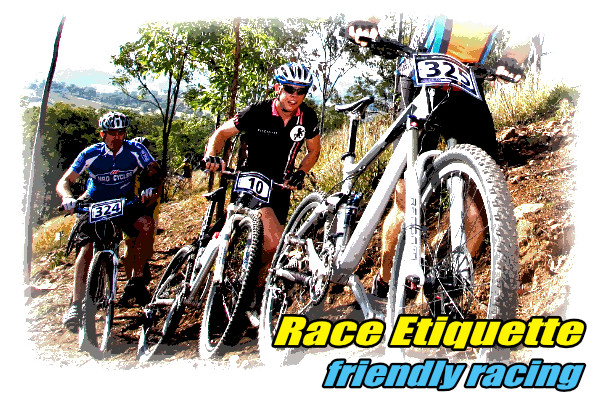
Getting Passed
When faster riders do approach you they will call out something like “Track”, “Track right”, “Track left” or “On your right” (or left) and this means they are passing you on the side that they have called out. So “Track left” means they will pass on your left side. All you need to do is try to give them room IF it’s available. Some new or less fit riders prefer to just pull over and let the faster rider go by. If they are trying to pass in a section of trail with no passing room then you do not have to give way. However, if you are not racing at a pace likely to reward you of a podium, it’s nice if you do make it as easy as possible for them. If they have only called “Track” with no indication of left or right, then they are telling you they want to pass as soon as you can allow them to do so. Once you identify a safe place for the overtaking to occur, you may wish to indicate with gesture and voice which side they should pass you on. A good rider waiting to pass will react immediately when you move slightly to one side and they’ll be passed you and off before you know it.
Note: Less experienced riders feel pushed by faster riders behind them and often crash trying to make room where it simply isn’t feasible to pass. Every fast rider has to contend with slower riders. They expect it and only the absolute tools get frustrated over it. If they are abusive, report them to the race organisers. Thankfully this behaviour is rare and by a huge margin you will be impressed by the behaviour of faster riders and hopefully they will be impressed by your behaviour also.
Walking
Although most riders will be capable of riding all of the track, there are times when walking is inevitable. You might just be too tired to get up that steep pinch anymore. Or, you might fly up to a steep pinch only to find one or more riders are walking it because someone lost traction for instance. A mechanical problem might cause someone to be walking anywhere on the track with their bike.
If you suddenly come upon a rider or riders walking a section you can ride, then call out “Track” but be prepared in case they simply can’t get out of the way. Thank them very much if they do though.
If you are walking any section of the track with your bike then stay aware of riders approaching from behind and do all you can to keep the track clear as they pass through.
Avoid, where possible, walking on the best/racing line.
Riding at night
For the longer races like the 12 and 24 hour mtb endurance races, racing during the dark is both an exciting and daunting opportunity. Do you have to do it? Nope. But it’s a lot of fun. A familiar trail can feel totally foreign at night. A trail you’ve been riding for hours in daylight, suddenly feels like a new place. Obviously you will need a proper set of MTB lights and we recommend you do some night rides on your local trails before tackling night during the race. However, if you don’t have, or can’t afford night lights, you can just stop until daylight returns if you wish. If you are in a team, the team might use you more during the day and save the legs of those who will race into and/or through the night. You can now be support for them perhaps. So many choices.
Pre Race Prep
Your diet and fuel intake is vital. 4, 6, 8, 12 and 24 hours is a long time to compete for. Even more critical if you are a solo rider or in a small team.
Drinking
Drink plenty of water a few days prior to the race and then alternate water with a sports drink like Gatorade, Endura, during the racing. Your kidneys work hard during mtb endurance races so be mindful if you are getting back pain low and to one side, you kidneys may need a rest from processing solutions like sports drinks. Switch to water for awhile. In hot weather, as a rule of thumb, aim to be drinking close to a litre of water each hour.
Note: Make sure what ever you are going to use on race day that you test you can drink or eat it on long, hard rides well before race day! Even food you regularly eat at home can cause intestinal or bowel problems during intensive exercise.
Eating
During racing eat small amounts and eat often. It’s important to not let your fuel reserves drop to low levels. It is very hard to recover once you’ve run out of the energy stores in your body. Again, as a rule of thumb, eat enough and often enough so as not to feel hungry at any time. Your body needs a constant trickle of energy from food.
Training
Stop training hard at least 3 days prior to the event. No point trying to get your body energy stores up prior to the race and then using them doing more intensive training. Better to let your body recover and wake up itching to ride on race day!
What to Bring
Food
Plenty of easily digestible, low G.I food which should be reasonably high in carbohydrates and protein for energy and muscle repair. Some high G.I snacks with some sugar content are good for mild use and when you feel a bit flat but don’t overdo it. Too much sugary snacks at one time will induce a response from your body that will counter the effect and leave you feeling flat again. Going like a wet cat for 5 mins then feeling like you are pedalling into a 50 kph headwind for the rest of the lap isn’t ideal.
Clothes
Proper cycling padded shorts/knicks are advisable for all the reasons you and your ‘special pants bits’ can imagine. A few cycling jerseys are highly recommended also.
Nights can still get chilly in the bush (even in summer if the weather turns nasty), especially in the wee hours of a 24 hour race, so some warm clothing for riding and relaxing in is advisable as fires and generators are often banned at events. Gas BBQ/ stoves are fine. For the longer mtb endurance races take at least two lots of riding clothing, more if you have it. A fresh change now and then really helps kick your attitude up a notch when the going is tough.
Sunblock
It can get hot by day out there and sunburn is nobody’s friend when the dust gets thick and the night sets in. Slip, slop and slap!
Meds and Supplies
Take any medication you might need such as asthma sprays, insulin (should you be a diabetic), tablets, contraceptives, antihistamines etc. Make sure someone around you knows where it is and keep the most critical meds on you at all times.
Illegal and/or performance enhancing drugs are obviously not allowed.
Massage Oils if you have someone to massage you is a good idea also. Massage can seriously help to fend off the muscle fatigue.
Personal hygiene products including your own toilet paper might be a godsend if the loos run out.
Accomodation
For the very long races, accomodation might be a tent, or the back your car. It might even just be a reclining deck chair. We’ve seen people turn up with 3 seater lounges! For shorter races, just a camp chair is fine. Either way, a pop up gazebo or similar is highly recommended for protection against sun, rain or morning dew.
Bike Related
Apart the obvious stuff like your bike and riding gear (knicks, jerseys and gloves) be sure to check you have your riding shoes and helmet with you. Forgetting them seems to be a common mistake.
Riders are not permitted to ride without a helmet!
Spare tubes is a must. You are usually not allowed to get assistance from anyone else while actually on the course, so it might be helpful to know how to change your own tube. Maybe also take a puncture repair kit in case you start running out of tubes.
A spare tyre isn’t a bad idea also, if you have one around, in case of a bad slash to the side walls.
Other things that you might like to bring along are spokes, spare tyre, spare rear derailleur hanger depending on your resources and how serious you are.
Chain lube is a must! You will re-apply that a few times during the racing and having a well lubricated chain goes a long way to reducing your friction and therefore hopefully putting off your fatigue.
Quite often there is a designated bike mechanic at the race to help with any bike problems that may develop during the race.
Race Outlook
It’s many hours long. That’s a long time to stay awake and keep getting on your bike, especially in the 12 or 24 hour races. As a newbie to mtb endurance races you could be taking twice the time or more as the fastest riders do to complete a lap.
So don’t go out there to win it in the first lap you are on the course. Be aware that every big effort you make takes a little out of your overall energy tank for the race. Maybe save your best till to the final hour or two when the race is winding down and you need to dig deep to finish. Until then just cruise it and enjoy the atmosphere. Your first mtb endurance race is a learning experience after all.
If you are in a newbie team then the best thing is nobody expects you to be fast or even ride all the time. If you feel you’ve had enough for awhile, or even for the rest of the race you can just say so and none of your team mates will care.
Race Day
For those longer mtb endurance races such as 12 or 24 hours, arrive as early as possible on race day so you can set up camp etc well before the race starts. You wont feel like doing it later.
It’s best to be there and ready to go a couple of hours before the start time so you can then concentrate on hydrating and eating a bit ready for the race. Also the riders briefing and registration need to be taken care of.
Riders briefing is simple: the race organisers talk: you shut up and listen.
Registration is simply checking off you are there and receiving your race number etc.
In the end you ride for your own achievement, set your own goals and try to nail them.
We hope all that gives you a better understanding why mtb endurances races continue to be loved and entered by so many riders. Hopefully this insight will help you understand that although racing does occur, it’s as much about the personal achievements and comradery as anything else.

